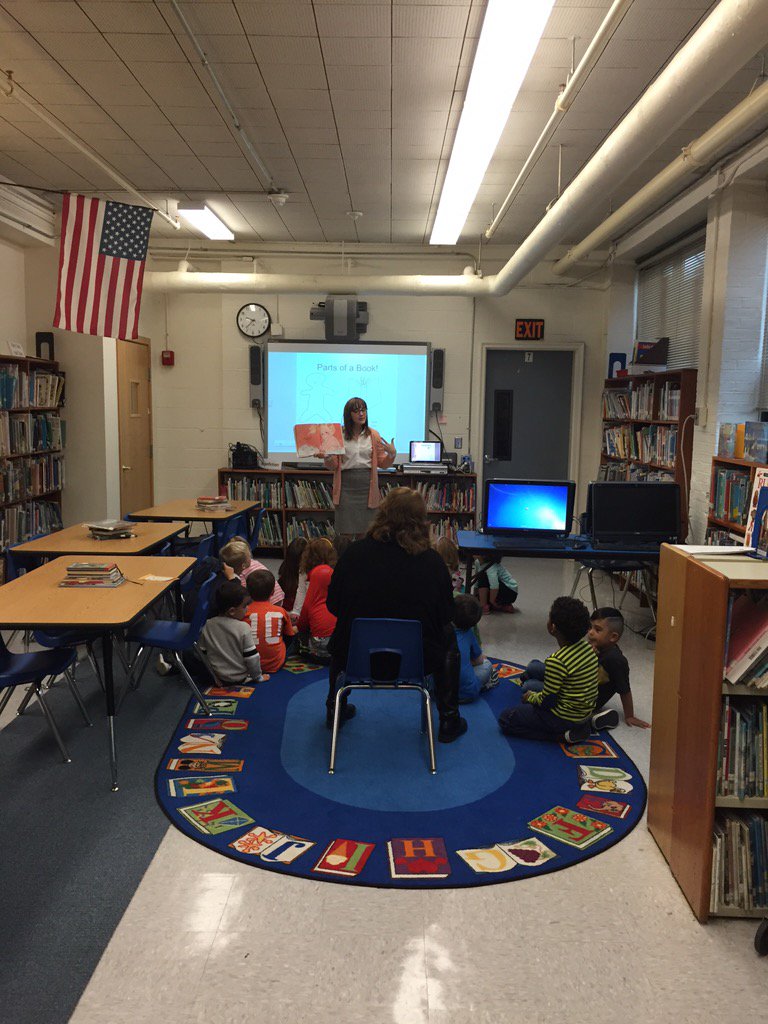The general theme for the month was Nonfiction, as we spent a good amount of time in January talking about Fiction and its elements. However, we still made room for some fun read-alouds!
K-2nd Grade
The younger grades celebrated World Read Aloud Day (February 16th) by working on pieces of art depicting their favorite scenes from a story. Some classes read works by our favorite author, Jacqueline Woodson; other classes listened to Chicken Big by Keith Graves. To spice things up, some classes were able to check out TumbleBooks - an amazing resource hosted by the Stevens Memorial Library. Did you know there's an entire online library of books - chapter books, as well as picture books that can be read to you - available to you 24/7, as long as you've got your Stevens Library card? It's an awesome website, perfect for hosting your own storytimes at home!
 |
| Click here to find the TumbleBook library in the Stevens Online Databases! |
We also did some work with KWL Charts. KWL stands for "Know/Want (or Wonder)/Learned". The chart is a way for kids to organize their information, and to visually represent the learning they do when they read a work of nonfiction.
We practiced with nonfiction books, and we noticed that it was a whole lot easier to come up with things we wondered about than things we knew about certain topics! It was fun to see our "Learned" columns fill up after reading nonfiction titles!
3-4th Grade
The 3rd and 4th graders started discussing the ways in which they can develop their own research topics from essential questions. We talked about Pre-Search - a similar concept to our "what I know" column for the younger kiddos - and how it's important to brainstorm everything you already know about a topic as a guideline for discovering new information. From one essential question about animals and camouflage, students were asked to use the Encyclopedias (the book ones!) to look up the keywords they brainstormed in order to find more information about the topic. Finally, they were asked to develop Thick and Thin Research Questions. A thick research question is robust, requiring a lot of in-depth research. A thin question is a question that can be easily answered in a few words. We talked about why those questions might be helpful in our research. During one class, students were so engrossed in the research and question-writing that they didn't realize a full hour had passed!
 |
| Sharing resources, brainstorming, and researching using the encyclopedias! |
5th Grade
The 5th graders started a discussion on Evaluating Sources of information. One lesson focused in on evaluating text/book sources. We talked about how you need to really look over a book before you decide it's going to be helpful for your research. Things like age, condition, illustrations/images and readability all play a role in determining if a source is the best possible source for use in projects. We worked in groups to evaluate three different books to determine which would be the most helpful to us in a project. It was a hit!
In our discussion surrounding the Evaluation of Websites (which can be significantly trickier!) we talked about what might be the most memorable acronym to ever appear in the library curriculum: The F.A.R.T Test!
 |
| This acronym is helpful for everyone who goes on the internet - kids and grownups! |





















